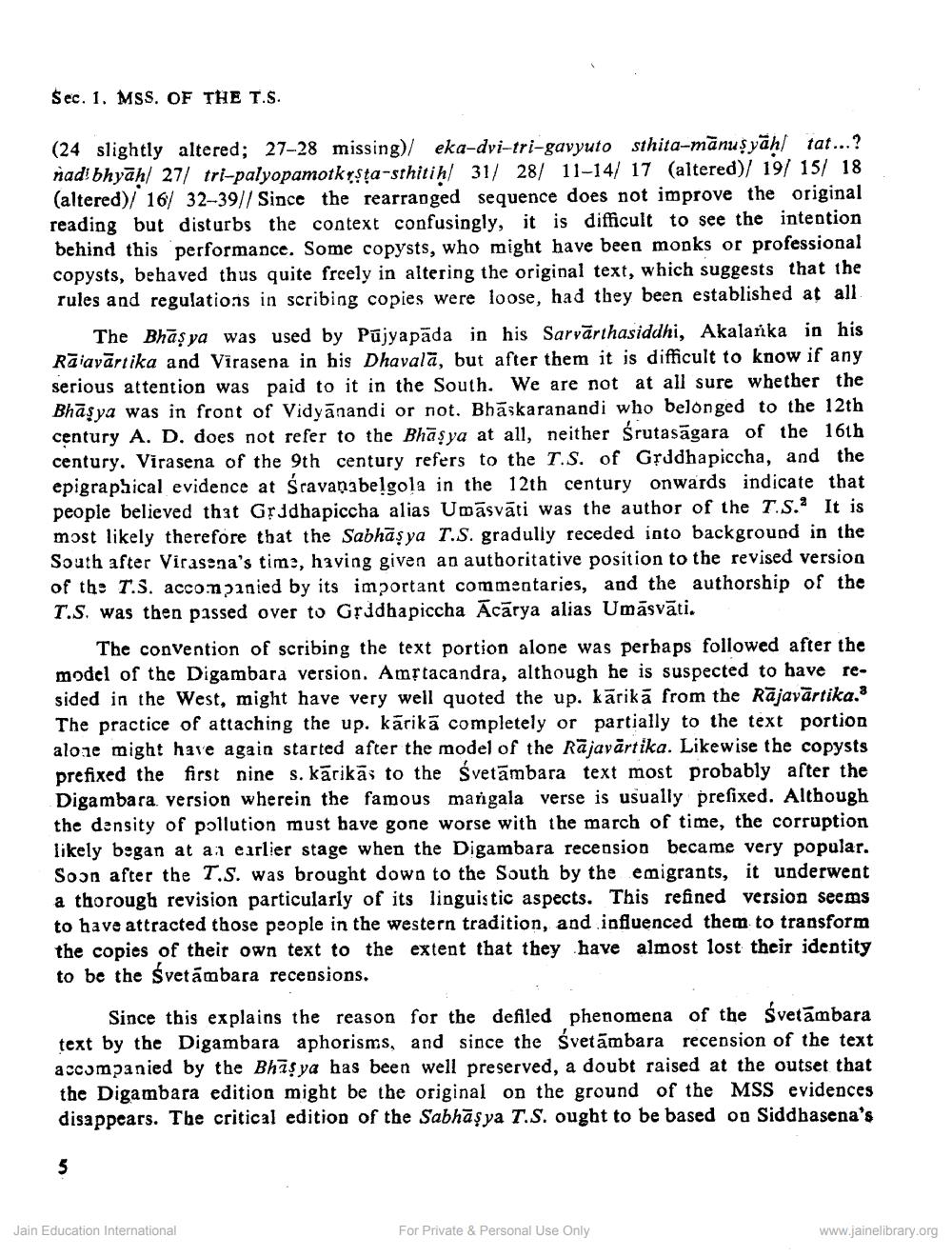________________
Sec. 1. MSS. OF THE T.S.
(24 slightly altered; 27-28 missing)/ eka-dvi-tri-gavyuto sthita-manusyah tat...? nad bhyah 27/ tri-palyopamotkṛṣṭa-sthitih/ 31/ 28/ 11-14/ 17 (altered)/ 19/15/ 18 (altered) 16/ 32-39// Since the rearranged sequence does not improve the original reading but disturbs the context confusingly, it is difficult to see the intention behind this performance. Some copysts, who might have been monks or professional copysts, behaved thus quite freely in altering the original text, which suggests that the rules and regulations in scribing copies were loose, had they been established at all.
The Bhasya was used by Pujyapada in his Sarvarthasiddhi, Akalanka in his Ralavārtika and Virasena in his Dhavala, but after them it is difficult to know if any serious attention was paid to it in the South. We are not at all sure whether the Bhagya was in front of Vidyanandi or not. Bhaskaranandi who belonged to the 12th century A. D. does not refer to the Bhasya at all, neither Śrutasägara of the 16th century. Virasena of the 9th century refers to the T.S. of Grddhapiccha, and the epigraphical evidence at śravapabelgola in the 12th century onwards indicate that people believed that Gridhapiccha alias Umasvati was the author of the T.S." It is most likely therefore that the Sabhäşya T.S. gradully receded into background in the South after Virasena's time, having given an authoritative position to the revised version of the T.S. accompanied by its important commentaries, and the authorship of the T.S. was then passed over to Grddhapiccha Acarya alias Umāsvāti.
The convention of scribing the text portion alone was perhaps followed after the model of the Digambara version. Amṛtacandra, although he is suspected to have resided in the West, might have very well quoted the up. kärikä from the Rajavartika. The practice of attaching the up. karika completely or partially to the text portion. alone might have again started after the model of the Rajavartika. Likewise the copysts. prefixed the first nine s. karikas to the Svetämbara text most probably after the Digambara version wherein the famous mangala verse is usually prefixed. Although the density of pollution must have gone worse with the march of time, the corruption likely began at an earlier stage when the Digambara recension became very popular. Soon after the T.S. was brought down to the South by the emigrants, it underwent a thorough revision particularly of its linguistic aspects. This refined version seems to have attracted those people in the western tradition, and influenced them to transform the copies of their own text to the extent that they have almost lost their identity to be the Svetambara recensions.
Since this explains the reason for the defiled phenomena of the Svetambara text by the Digambara aphorisms, and since the Svetambara recension of the text accompanied by the Bhasya has been well preserved, a doubt raised at the outset that the Digambara edition might be the original on the ground of the MSS evidences disappears. The critical edition of the Sabhäşya T.S. ought to be based on Siddhasena's
5
Jain Education International
For Private & Personal Use Only
www.jainelibrary.org




